Trying to be much better about linking to these. The 38th Carnival is up at sortingoutscience.net. Wanderingspace did the 22nd back in September of 07.
Highlights for 2008
 Cassini takes a pass at Titan on February 22 (already having made a pass this year on January 5th).
Cassini takes a pass at Titan on February 22 (already having made a pass this year on January 5th).

Soon after Titan, Cassini performs a truly unexpected maneuver and flies directly through the plumes of Enceladus on March 12th. This is a somewhat risky task for the probe as the particles it will surely encounter may pose some kind of impact threat to the spacecraft. Mission planners expect the risk to be low as they intend to turn the spacecraft around and let the less delicate side of Cassini bear the brunt of the material and photograph the geysers as it moves away from Enceladus. It should make for some of the most exciting planetary science planned for this year.

Cassini has another go at Titan on March 25.

Yup – you guessed it. Cassini at Titan again on May 12th.
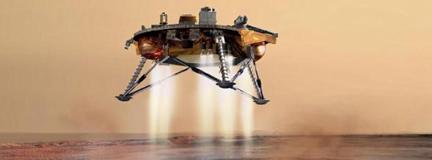
The Phoenix lander arrives at Mars on May 25th and (hopefully) makes good on the failure of the Mars Polar Lander. It will be the first time a probe will attempt a landing on the Martian pole and will conduct a series of experiments looking for the existence of water ice.

You can never have too much of a good thing. Cassini at Titan again on May 28th as well as July 31.
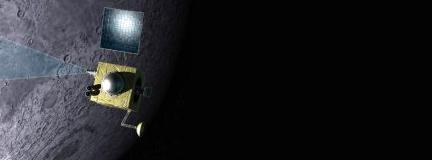
Chandrayaan becomes India’s first planetary probe as it leaves for the moon in Early July (was April).

The extended Cassini mission has made Enceladus a prime target of investigation and the new encounters begin on Aug 11th and comes within 54km of the surface.

Rosetta still on its way for an encounter with Comet 67P/Churyumov-Gerasimenko in 2014, will make a close pass at an asteroid named 2867 Steins on Sept 5th at a distance of only 1700 km. Steins is a small asteroid measuring only a few kilometers in size and the craft will be traveling at a relatively slow speed which should allow for some good resolution images to be acquired during the encounter.

Messenger (having just completed the first encounter in 33 years this past week) has another go at Mercury on Oct 6th and flies past more uncharted territory on its way to eventual orbit insertion in 2011.

Two more close flybys of the Saturnian moon Enceladus on Oct 9 and Oct 31. The first at hair-raising distance of 25km and the second around a more reasonable 200km.
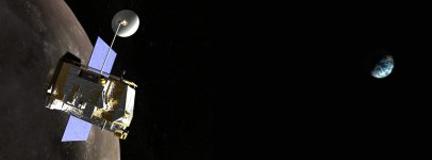
In an effort to recognize the International Lunar Decade (and intended manned Lunar missions within 15 years), the United States returns to the moon with the Lunar Reconnaissance Orbiter on Nov 3rd. It is expected to begin its scientific goals only 3 days after launch and is expected to look for possible deposits of water ice in permanently shadowed craters near the Lunar poles.

And finally more Titan flybys on Nov 3, Nov 19, Dec 5 and Dec 21.
All this is in addition to the ongoing work of Opportunity and Spirit on the surface of Mars. Mars Express and Mars Reconnaissance in orbit around Mars. Cassini’s non-targeted continuing tour of other icy Saturnian moons. And who knows, maybe we will see more than 2 or 3 reports coming from the ever quiet Venus Express mission currently at Venus.
Sadly, some very exciting missions will be quietly traveling en route to their targets and are not expected to be heard from in 08 like the Dawn Mission to the Asteroid Belt, New Horizons mission to Pluto/Charon, the newly re-targeted Deep Impact mission (now known as Epoxi) as well as Stardust now on its way to a follow-up visit to Tempel 1 the comet that was smacked by Deep Impact in 2005.
Messenger Reveals Unseen Mercury
Little coming in from Messenger at this point due to some unexpected bandwidth issues at the receiving stations. Apparently there has been some Ulysses (a separate Solar observing mission) anomaly that needed tending to and has taken up the available bandwidth that had been planned for Messenger’s data. The data is reportedly fine and ready for transmission to Earth, just a delay.
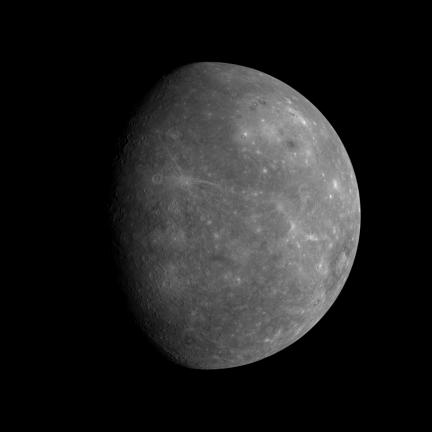
For now the mission team has released this view of Mercury from the historic swing by on January 14. Much (if not all) of this image represents areas on the planet never before seen by human eyes. Very moon-like… hoping for something to come from this encounter that will be visually exciting for we the unwashed-masses. That said, scientists and the planetary sort are thrilled to be seeing this local neighbor which has been long overdue for a follow-up mission to the Mariner mission of 33 years ago.
Mercury Here We Come
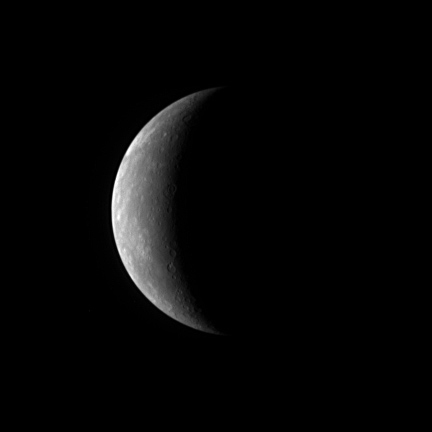 Today’s flyby will come as close as 200km from the surface. That is comparable to some of the close flybys of the Saturnian moons made by Cassini.
Today’s flyby will come as close as 200km from the surface. That is comparable to some of the close flybys of the Saturnian moons made by Cassini.
See here for Ted’s colorization of this image based upon his Mariner 10 work.
Messenger at Mercury in 2 Days
Nothing to show at this point (except some distant calibration images), but Messenger will arrive at Mercury on January 14th. This is the first visit to the tiniest planet since 1973. On that visit the Mariner spacecraft flew by the same region 3 different times — therefore leaving more than 50% of this planet yet unseen by human eyes. With the arrival of Messenger, most of what has not yet been imaged will be revealed in 2 more additional flybys and surely 100% will be revealed once Messenger achieves orbital insertion in 2011. With the exception of Pluto and its partner Charon, Mercury represents one of the largest pieces of real estate not yet mapped or imaged by some kind of probe in all our solar system.
Unusual Stains on Mars
Smallsteps Wallpaper: Lunar Orbiter 3
Earthrise as Seen by Kaguya
 Thank you JAXA. Last time we saw something like this was round about 1974… If you want a peek at one of the HiDef movies being shot by Kaguya see this link here.
Thank you JAXA. Last time we saw something like this was round about 1974… If you want a peek at one of the HiDef movies being shot by Kaguya see this link here.
Comet Holmes from November 4
 Must have missed this earlier image of Holmes. In the interest of seeing the comet better, the background stars were reduced with software and the surrounding space around it was darkened. You can see the original image here taken by Ivan Eder.
Must have missed this earlier image of Holmes. In the interest of seeing the comet better, the background stars were reduced with software and the surrounding space around it was darkened. You can see the original image here taken by Ivan Eder.
Comet Holmes from November 8, 2007
 Here is Comet Holmes just a week after the previous post. The original image had multiples of star trails which have been quickly removed in Photoshop, probably resulting in some subtle “clumping” artifacts in the surrounding coma. For reference, here is the orignal by Chris Schur.
Here is Comet Holmes just a week after the previous post. The original image had multiples of star trails which have been quickly removed in Photoshop, probably resulting in some subtle “clumping” artifacts in the surrounding coma. For reference, here is the orignal by Chris Schur.
Comet Holmes from November 1, 2007
 Comet Holmes is a small comet that travels between the orbits of Mars and Jupiter. The comet reappeared to observers around the time that was expected (for those who follow such objects), but the only difference was that around October 23 the comet began to get much brighter. In a 24 hour period the comet was thousands of times brighter than it had been the day before. At the time of this post, it is reported to be appear in the sky at around 1/3 the size of our moon and they say it is still expanding. There are no “official” theories as to what is causing the activity, but many assume that there had been some kind of collapse of materials on the surface which would then cause a large amount of material to escape into the space around it.
Comet Holmes is a small comet that travels between the orbits of Mars and Jupiter. The comet reappeared to observers around the time that was expected (for those who follow such objects), but the only difference was that around October 23 the comet began to get much brighter. In a 24 hour period the comet was thousands of times brighter than it had been the day before. At the time of this post, it is reported to be appear in the sky at around 1/3 the size of our moon and they say it is still expanding. There are no “official” theories as to what is causing the activity, but many assume that there had been some kind of collapse of materials on the surface which would then cause a large amount of material to escape into the space around it.
The comet seems to lack the usual comet tail and appears to be fuzzy and round, as we are looking at Holmes straight down through the tail end of it from our position here on Earth. The comet was originally discovered in 1892 due to a similar outburst which now seems to be repeating itself.
The image above was provided by wikipedia.com and only credits the image as being submitted by user Spanto and was taken in Barcelona , Spain, dated Nov 1 2007.
The Regan Saturn Portrait Extended Mix
 The one Saturn image that we keep coming back to at wanderingspace seems to be the Ian Regan portrait of Saturn. The composition, angle and color captured in the shot somehow seem to be better than any other. While there are a few other full Saturn images now available from the Cassini mission, none seem to have captured the drama that this one does. The angle that the ring shadows fall on Saturn’s disc, the phase that Saturn happened to be in at the time and the color available as the shot was taken from a more northern position. However, trying to apply the image to larger scale resolutions was not possible as the resolution in the orignal would require that the rings be extended to fill the frame on the left, right, bottom and potentially the top as well (I was also curious to see if the image was just as impressive if it was not angled and cropped as it is in the original). Extending the rings in one direction is easy enough, but doing it on all sides is near impossible to try to do in any image editing software such as Photoshop.
The one Saturn image that we keep coming back to at wanderingspace seems to be the Ian Regan portrait of Saturn. The composition, angle and color captured in the shot somehow seem to be better than any other. While there are a few other full Saturn images now available from the Cassini mission, none seem to have captured the drama that this one does. The angle that the ring shadows fall on Saturn’s disc, the phase that Saturn happened to be in at the time and the color available as the shot was taken from a more northern position. However, trying to apply the image to larger scale resolutions was not possible as the resolution in the orignal would require that the rings be extended to fill the frame on the left, right, bottom and potentially the top as well (I was also curious to see if the image was just as impressive if it was not angled and cropped as it is in the original). Extending the rings in one direction is easy enough, but doing it on all sides is near impossible to try to do in any image editing software such as Photoshop.

Instead, a one pixel wide swash of the rings was sampled and turned into vectors using Adobe Illustrator. This further allows Illustrator to stretch and curve the ring information captured without having to worry about resolution or pixel distortion. The row of rings was then applied to a brush pattern and applied and wrapped to a simple circle shape. Now the rings are in full circle and the proportions are adjusted. That full set of rings was then rendered in 3-D software and the correct angle as well as perspective was applied and matched with the original Ian Regan image underneath the render for reference.
After that, all that is left to do is merge the Regan image to the rings (and maintain as much of the original image as possible) and artificially add the disc shadow that would fall upon the rings behind the planet iteself.
To see the image in hi-res use check out the 2560x1600 wallpaper sets for The Planets and Saturn Scenes
Japan’s Kaguya: Orbiting and Releasing Probes
Always interesting to see parts of a probe set against the celestial body it is observing. Unlike images that only include the target, these remind you of the presence of a probe or observer. It illustrates a clear difference between seeing these bodies from a great distance (say from a telescope like Hubble) versus knowing that these views were taken very far away from us here on Earth and in the proximity of a very alien world.

The mission Kaguya is Japan’s contribution to the International Lunar Decade which has only just begun and might hopefully end with some form of manned mission by or around 2017.
The mission has thus far released one of it’s two smaller probes (Rstar) which will independently orbit the moon and the second smaller probe (Vrad) will be set in orbit sometime today. The mission’s main objective is to help solve some of the mysteries of the moon’s origin as well as acquire a more complete understanding as to the moon’s usefulness to the human race and it’s potential role in future space exploration.
Carnival of Space #23
Get your space-carni fix at advancednano.blogspot.com for this 50th anniversary of Sputnik week.
The Carnival of Space 22: The Art of Space
 I am honored to be the host of The Carnival of Space’s 22nd edition with a focus on the art of space. Wanderingspace considers images of our Solar neighborhood to be art in their own right, so here the line between art and science is thinly drawn to begin with. Enjoy the links!
Recently artist Bettina Forget had one of her creations featured on the back cover of a recent Planetary Society periodical. She posts at her Inside the Artist’s Studio blog and recently mused on sketching at the eyepiece of a telescope and its benefits. Be sure to also take a look at her Moon Series, which is where the previously mentioned Planetary Society featured painting of Io and Europa can also be viewed.
I am honored to be the host of The Carnival of Space’s 22nd edition with a focus on the art of space. Wanderingspace considers images of our Solar neighborhood to be art in their own right, so here the line between art and science is thinly drawn to begin with. Enjoy the links!
Recently artist Bettina Forget had one of her creations featured on the back cover of a recent Planetary Society periodical. She posts at her Inside the Artist’s Studio blog and recently mused on sketching at the eyepiece of a telescope and its benefits. Be sure to also take a look at her Moon Series, which is where the previously mentioned Planetary Society featured painting of Io and Europa can also be viewed.
Another fine arts bit of space creativity can be found in the recent work of artist Robert Whitman. Pixel Pusher has an introduction to his show “Turning” which features glowing, spinning sculptures of such moons as Europa and Ganymede while another installment involves a projection of Io. The show is currently on exhibit at the Pace Wildenstein Gallery in New York City. So hop on the subway, it closes on September 29!
If you don’t just want to look at space art but actually create it, Artsnova Digital Art and Space has a few words on a new NASA Space Art Contest whose theme is “Life and Work on The Moon”.
Still feeling creative? The Wired Science Blog is hosting a NASA Slogan Contest where we all have an opportunity to come up with our own slogan and submit it. This contest is only open to entries for about another 24 hours after this goes live, so hurry over!
In the strange category, The Podcast Troubadour offers up two Carnival of Space Themes for your listening pleasure. One is more theatrical and breaks into what can only be described space carnival music while the other will shake your descent stage thrusters. Yes... theme music for The Carnival of Space. The internet is a place where anything can happen and usually does.
If you are unfamiliar with the work of IMAX in a Basement you need to take a look at what exactly is coming out of that basement. The film “Outside In” is entirely made of Cassini still images and is somehow made into what feels like a 3-dimensional voyage to Saturn without the use of any 3-d modeling software. Check out his new offering of 100 Megapixels of Saturn Ring Magnificence with both a hires still and a sneak-peek video segment.
Bridging the gap between art and pure space science, I feel the need to link to Don Mitchell’s Mental Landscapes site for his Soviet Venus Images collection. This is not a blog... i know... but if you scroll about half-way down the page you will see his re-worked Soviet Venera images of the surface of Venus which is just about the most incredible feat i have seen by any freelance imager. Maybe you are familiar with his work already, but if not... every fan of space exploration needs to know that these images now exist thanks to Don.
Riding with Robots reflects on that recent Hubble image of Ceres in, “The Clear Power of a Fuzzy Image” which according to the author “embodies his fascination with space exploration”.
While we are in a reflecting mood Cumbrian Sky compares the 1981 experience of images of Iapetus coming from Voyager to the 2007 experience of images of Iapetus coming directly to our computer screens from Cassini. Space exploration has certainly changed in 25 years. If you want to see more about the recent Iapetus flyby be sure to check out Emily Lakdawalla’s post on the Voyager Mountains and her most excellent link at the end of the article to the full set of images and metadata from the event.
For some off topic posts, A Babe in the Universe offers a new video Images of a New Space Age. Sorting Out Science considers the recent meteorite impact in Peru. Unenumerated has some real options analysis for space projects and takes a fresh look at risk evaluation for deep space missions. Robot Guy posts a whole episode of The Universe’s Mars Episode. Astroblogger captures the ISS whiz past Jupiter. Hobbyspace is telling us about how Google Moon is getting sharper as well as a new 3-D Hubble IMAX movie in the works. And Mr. Gerhards is hoping to record the goings on in going to see Shuttle launches before its too late.
Finally, some posts on two books from completely opposite ends of the spectrum. Lunar Photo of the Day takes a peek into the book-by-committee publication, “The Scientific Context for Exploration of the Moon” which is apparently the kind of book that may hold some sway in terms of Lunar decision making over at NASA. On the other hand, Music of the Spheres blogs on “Cosmos for Beginners” which, unlike the previous title, could be a nice purchase for children of all ages between 12 and 90.
Well, thats all for now. Make sure you bookmark some of these excellent blogs and maybe even subscribe to their RSS feeds. Remember, its the internet… all the planetary love you can ever ask for and its all for free!
Carnival of Space Is Nearly Here
I have been contacting some of my favorite space related bloggers about their potential inclusion in the upcoming Carnival of Space to be hosted here at Wandering Space on Sept. 27. Many of these individuals surprised me by admitting that they hadn’t been aware to its existence. So, in case you are unfamiliar… The Carnival of Space is simply a regular round-up of posts relating to space exploration and research. Each issue of the carnival is hosted at a different blog location and the editor of said blog would, in effect, curate that edition of the carnival. The final result is essentially just a blog post that links out to several other blogs posts and hopefully works as a sort of “best of” collection for the past few weeks. It is a great opportunity to get a whole lot of traffic as a host and share that traffic with other bloggers by linking to their individual posts. The hope is that it will not only get people reading a single article, but maybe stay a while and check out the rest of the blog… maybe even become a regular reader or subscriber.
The last edition of the Carnival of Space (#21) was hosted at whyhomeschool.blogspot.com. That edition had a theme which was the unveiling of the Google Lunar XPrize. Like that edition, the next edition to be hosted here will have a theme of “Art and Imagery of Space”. Hopefully highlighting both people who creativly work with space imagery, as well as people who do more technical compositing and work with mission data. If you have any ideas or potential content for the next carnival please contact wanderingspace.net with your ideas. Only three days left.

Coincidentally, The Dawn Mission to the Vesta and Ceres (asteroids) is scheduled to lift-off the same day as the carnival. This has been repeatedly delayed for a while now. Hopefully the 27th sticks.
In the Shadow of the Moon Trailer
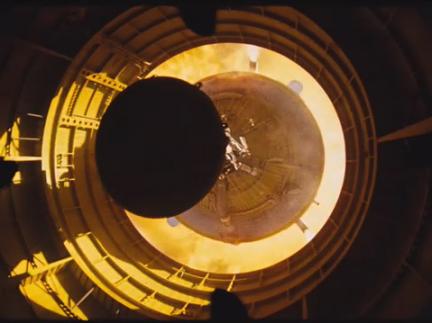 The Ron Howard documentary “In the Shadow of the Moon”, came to theaters on September 7th. How did I miss this? See the trailer here.
The Ron Howard documentary “In the Shadow of the Moon”, came to theaters on September 7th. How did I miss this? See the trailer here.
Iapetus September 12 (color)
 In the world of moons and planets people are quite excited about the recent Cassini flyby of Iapetus. What we have known about this moon for quite some time is that it is much lighter on one side than the other. Voyager gave us a peek at that phenomenon and then when Cassini got a closer look it started to seem as if something has rained down this dark material on one side of the moon but not on the other. However, now that Cassini has come within 1500 km the details are staggering. Nobody has any idea at this point what possible process could have created this surface. There are places where the bright material seems deposited and others where the dark does.
In the world of moons and planets people are quite excited about the recent Cassini flyby of Iapetus. What we have known about this moon for quite some time is that it is much lighter on one side than the other. Voyager gave us a peek at that phenomenon and then when Cassini got a closer look it started to seem as if something has rained down this dark material on one side of the moon but not on the other. However, now that Cassini has come within 1500 km the details are staggering. Nobody has any idea at this point what possible process could have created this surface. There are places where the bright material seems deposited and others where the dark does.
As more details and theories come in, there will be additional posts. Just worth noting that the scientific community seems to be as excited about this as they were when they got their first looks at Jupiter’s moons from Voyager.
By the way, DO CLICK ON THAT IMAGE above… its HUGE.
Iapetus September 10 - The Ridge (mono)
The ridge at Iapetus’s equator from only 3,148 km. The black and white nature of Iapetus is only one of its bizzare traits, the other is the huge mountain range that runs almost completely around its equator. This the feature that often causes the mainstream media to compare the moon to a walnut.

That feature is clearly seen in this previous post.



